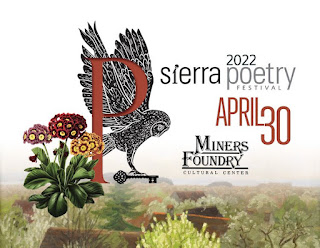April is Arts, Culture & Creativity Month, both in Nevada County and across California. This year’s theme is “The Arts Work”, meaning the Arts heal, build communities, advance justice, empower youth and create jobs.
April is also National Poetry Month! To celebrate the literary arts, the Sierra Poetry Festival at the Miner’s Foundry in Nevada City on April 30th marks a culmination of a month of free pop up arts events throughout Nevada County.
Here are 6 ways you can participate:
2. In Truckee we have several FREE poetry writing workshops, April 1nd, April 8th, and April 18th, and an open mic/poetry slam on April 23rd.
3. Register for the Sierra Poetry Festival April 30th for a celebration in-person
4. You can help Nevada County celebrate Arts, Culture & Creativity Month by posting your events on our Community Arts Calendar, choosing from among these these graphics for your websites and printed materials, and by becoming a member of Nevada County Arts Council during April.
5. Join the following activities alongside Californians for the Arts:
· ATTEND weekly thematic webinars (every Friday)
· SIGN UP to be an Advocacy Week Delegate and wait to hear from us with instructions about how to join our calls with local legislators in support of Nevada County’s California Cultural Districts during this important budget season during advocacy week on April 25-29.
6. SAVE THE DATE on May 9th to attend a Nevada County Board of Supervisors in-person meeting, where we will be thanking the County for its support during the COVID-19 public health crisis, whether through:
· Its support of anchor creative sector institutions via Economic & Community Resiliency grants as a result of CARES Act funding;
· Its support of the arts via its Community Resiliency Grants Program as a result of ARPA funds;
· Its support of the arts through Nevada County Relief Fund
I look forward to seeing you out and about in our arts community!





